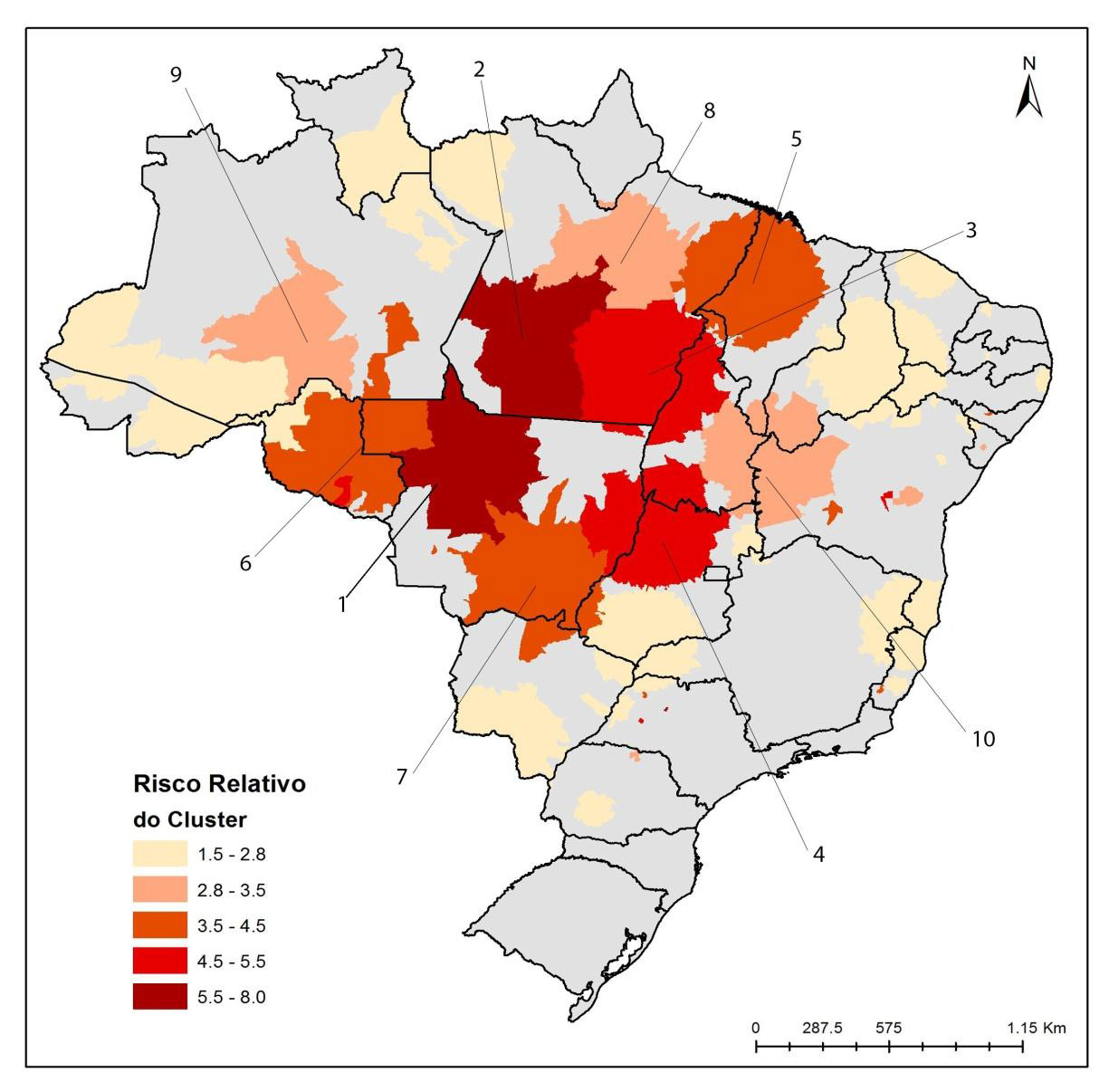The analysis of spatial cluster is one of the strategies for identifying endemic areas.
In the period 2011-2013, the last three years, the areas of greatest risk of illness from leprosy in Brazil are concentrated in municipalities located in the Central region and its neighbourhood in the North and Northeast.
This change in the distribution pattern of the disease results from reducing the number of municipalities belonging to the most endemic clusters. The clusters were estimated from the overall detection rate as a proxy for incidence.

It was found that the 10 most endemic clusters, with relative risks between 03-08 times the average risk of the disease by leprosy in Brazil, are found in six (06) of the 27 Federative Units.
The 621 municipalities included in the 10 clusters are mainly located in the states of Mato Grosso, Pará, Maranhão, Tocantins, Goiás, Rondônia and Bahia.
If we consider the total number of diagnosed cases in all districts of these States, they represent 44% (13,597 / 31,044) of new cases diagnosed in 2013 and only 14% of the Brazilian population.
Other identified 10 clusters have lower risks and are located in areas historically considered endemic. Therefore, investments in search of new cases will have to continue to be prioritized in these locations, as has been done in the last three years, in order to intensify the process of elimination of leprosy as a public health problem in the country.
